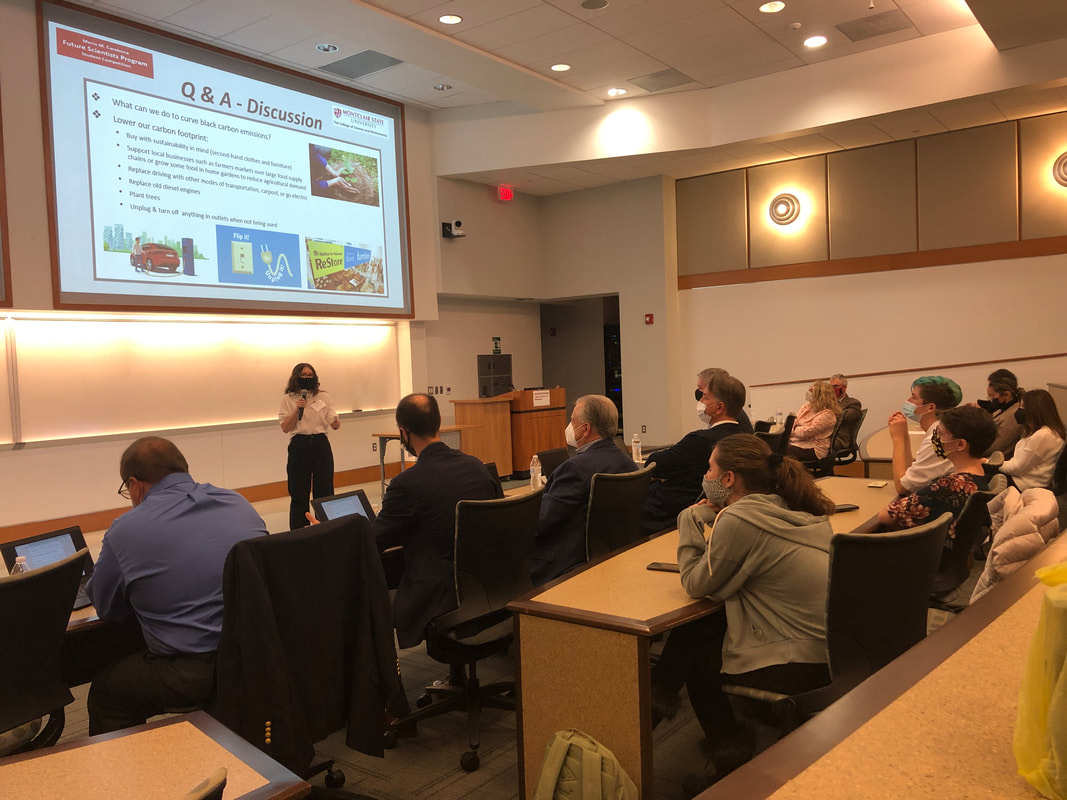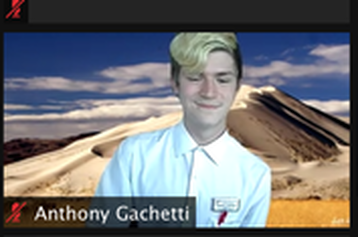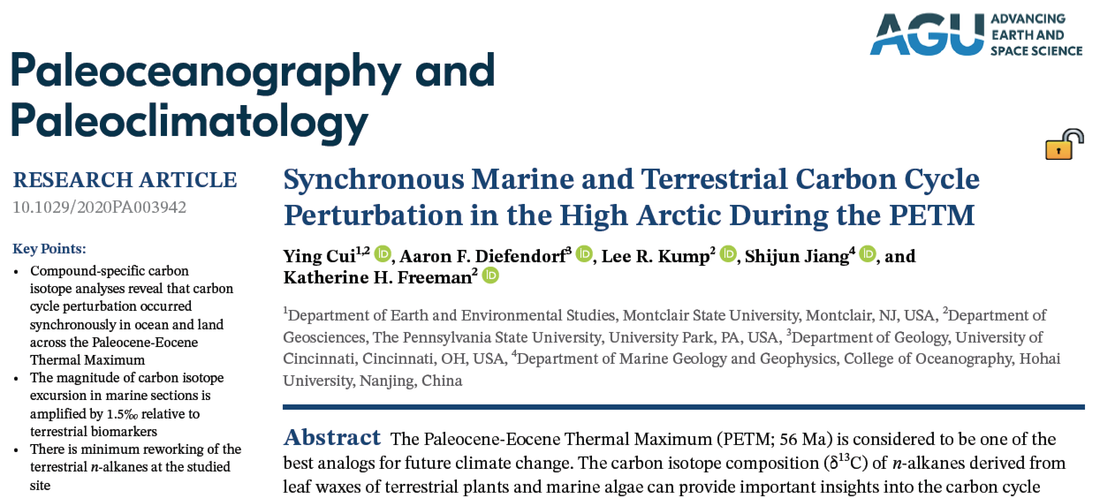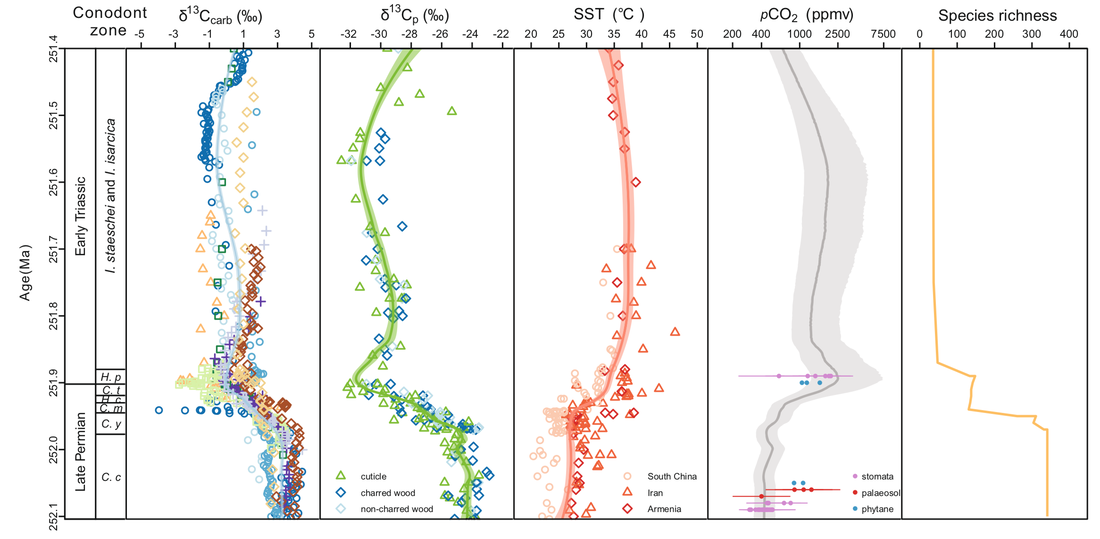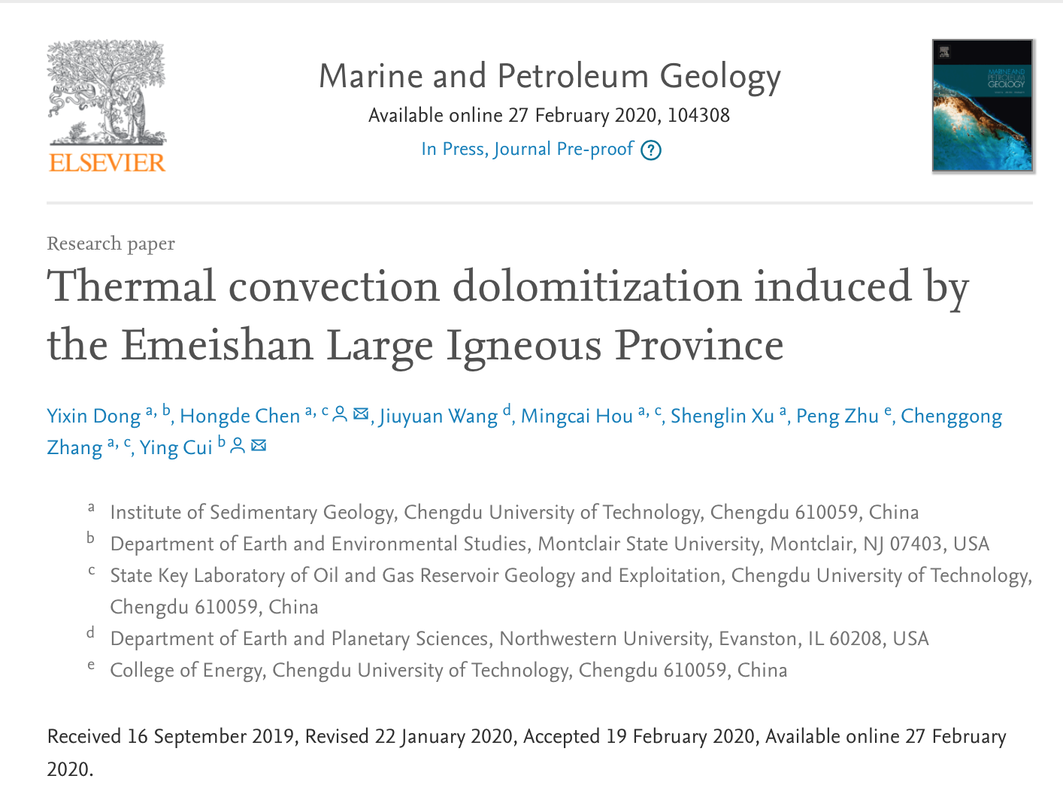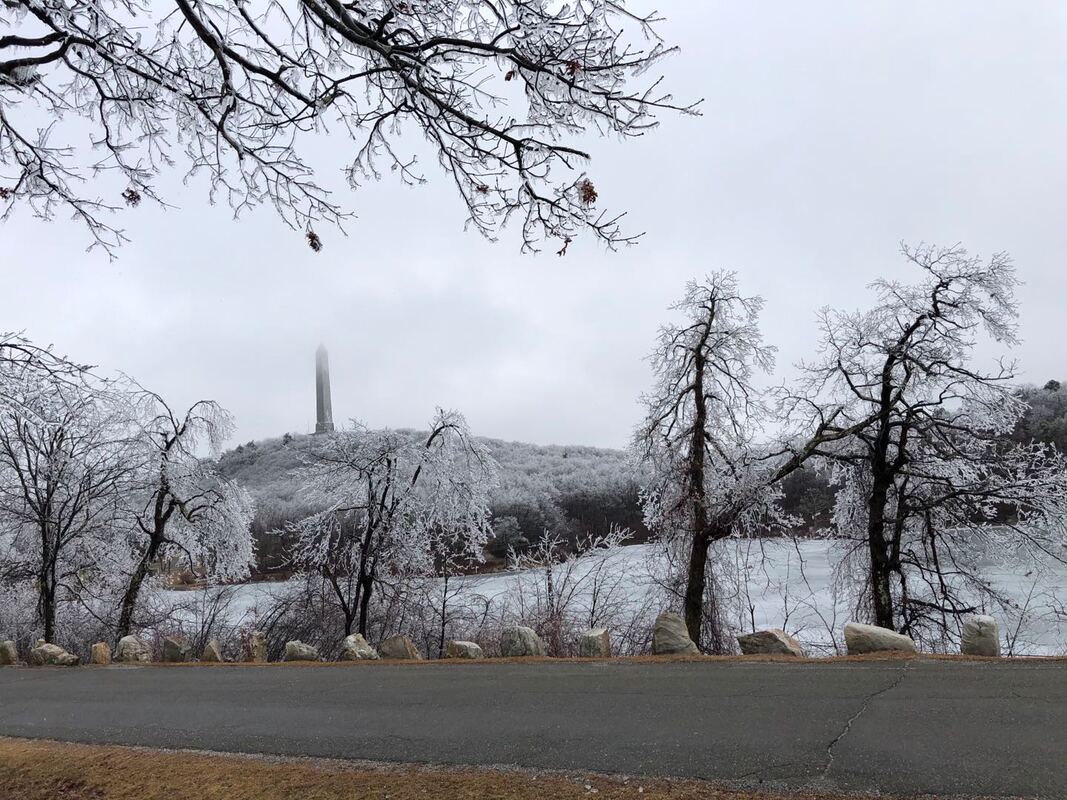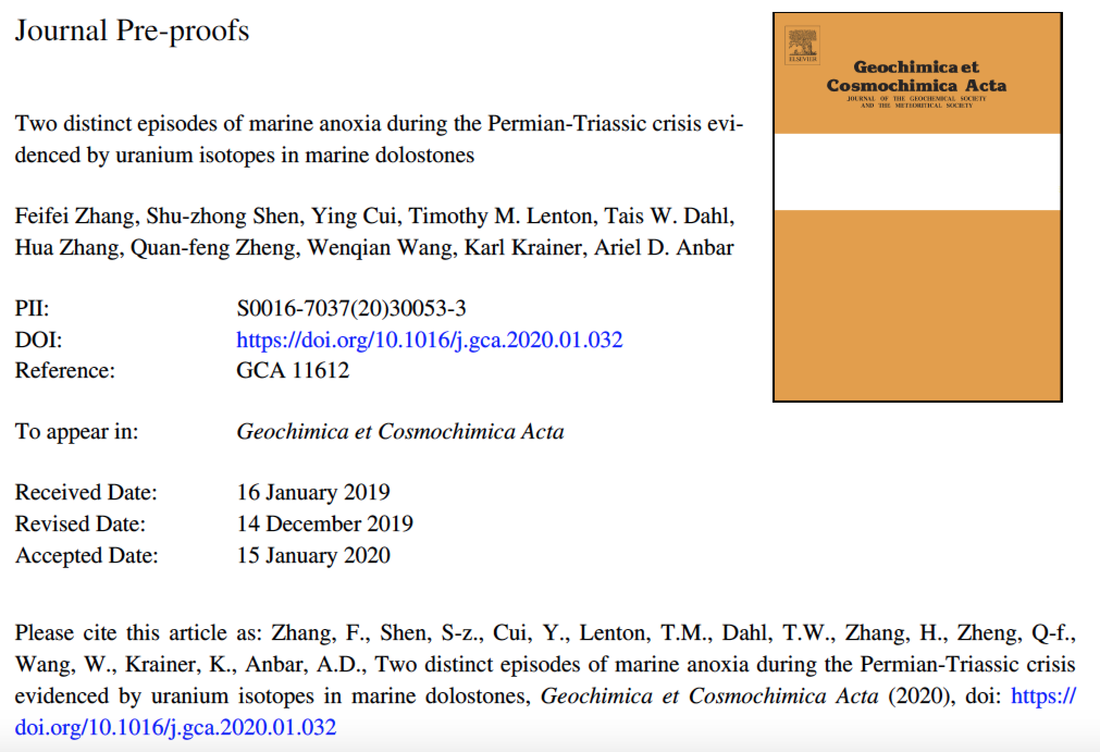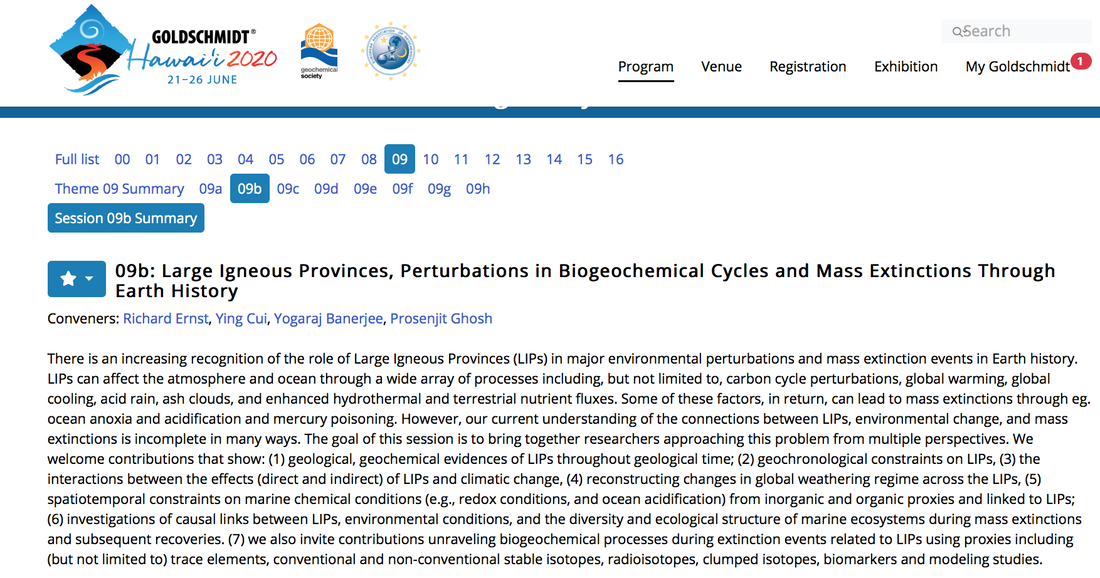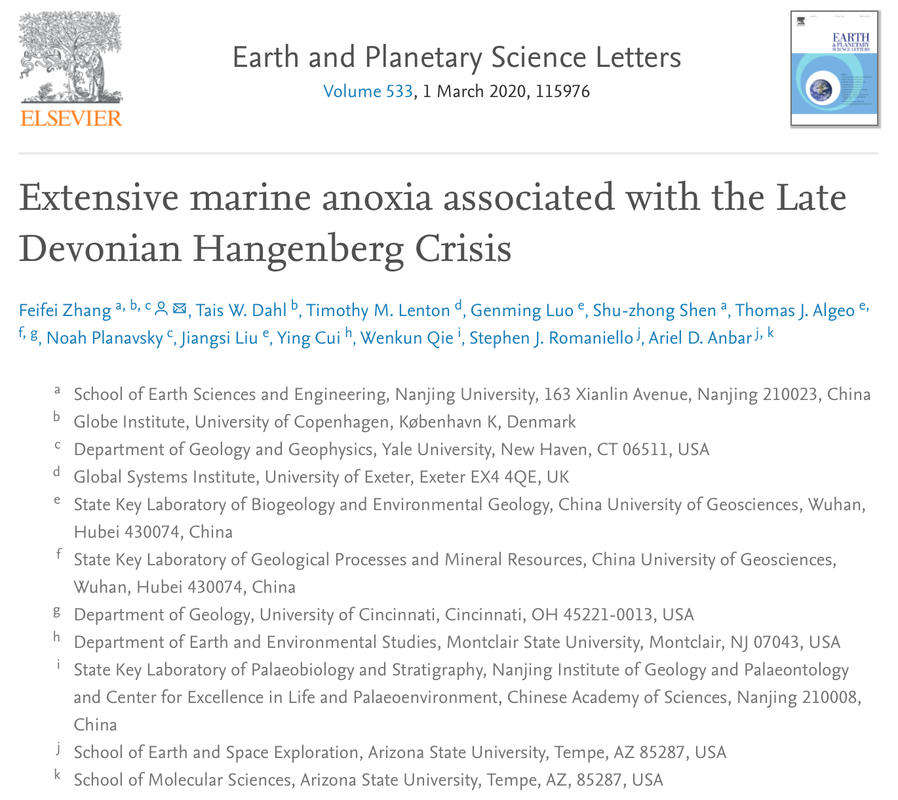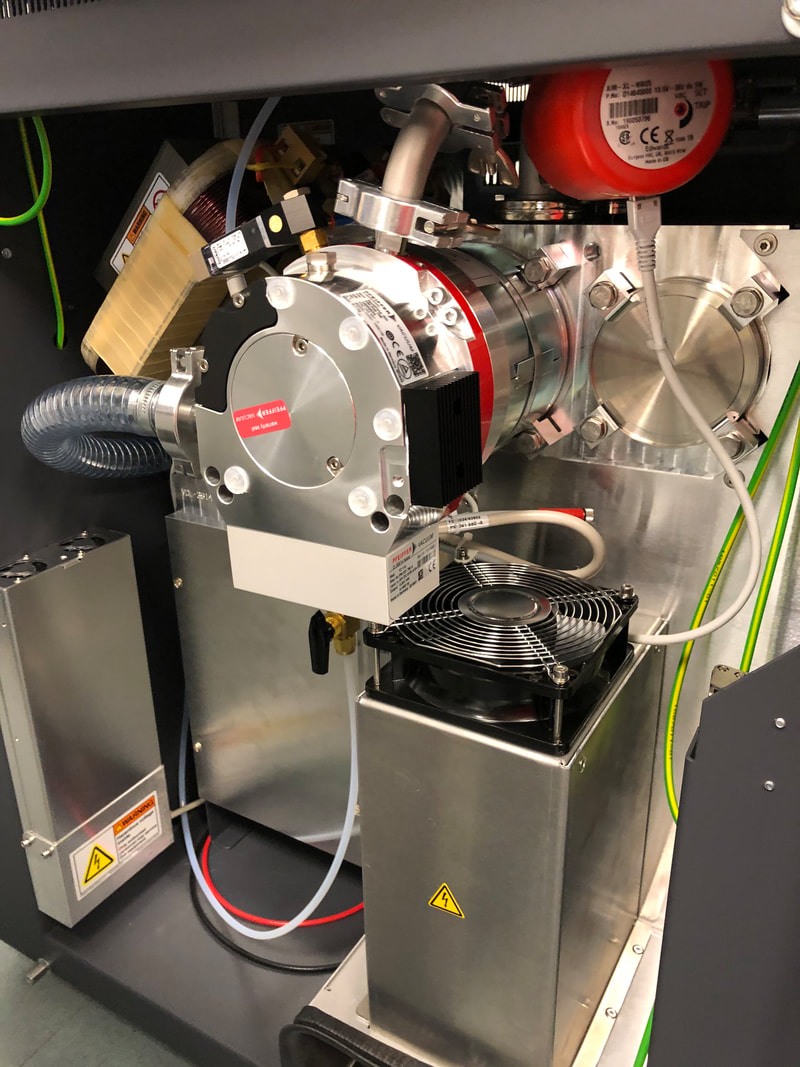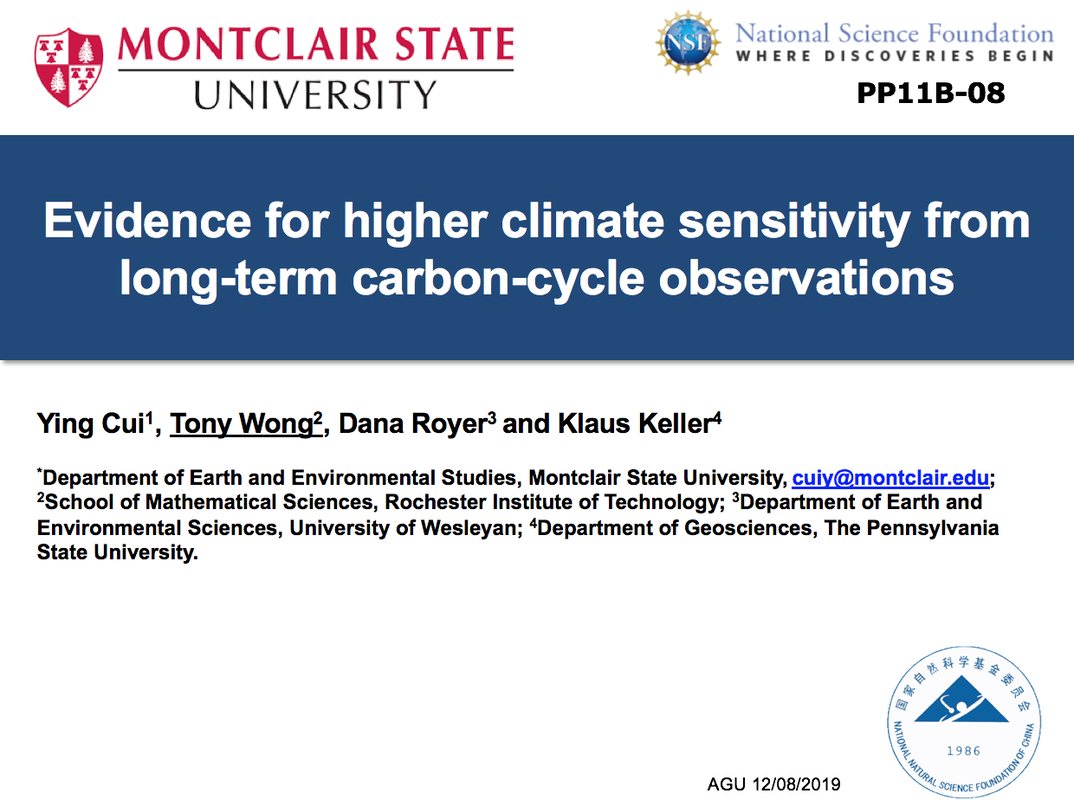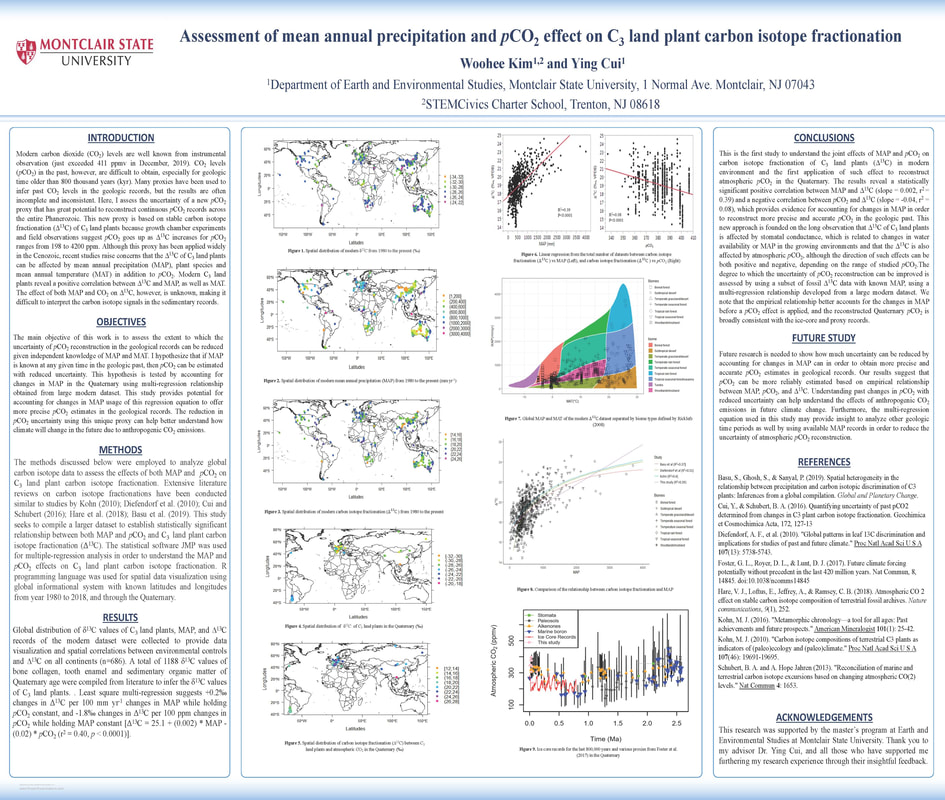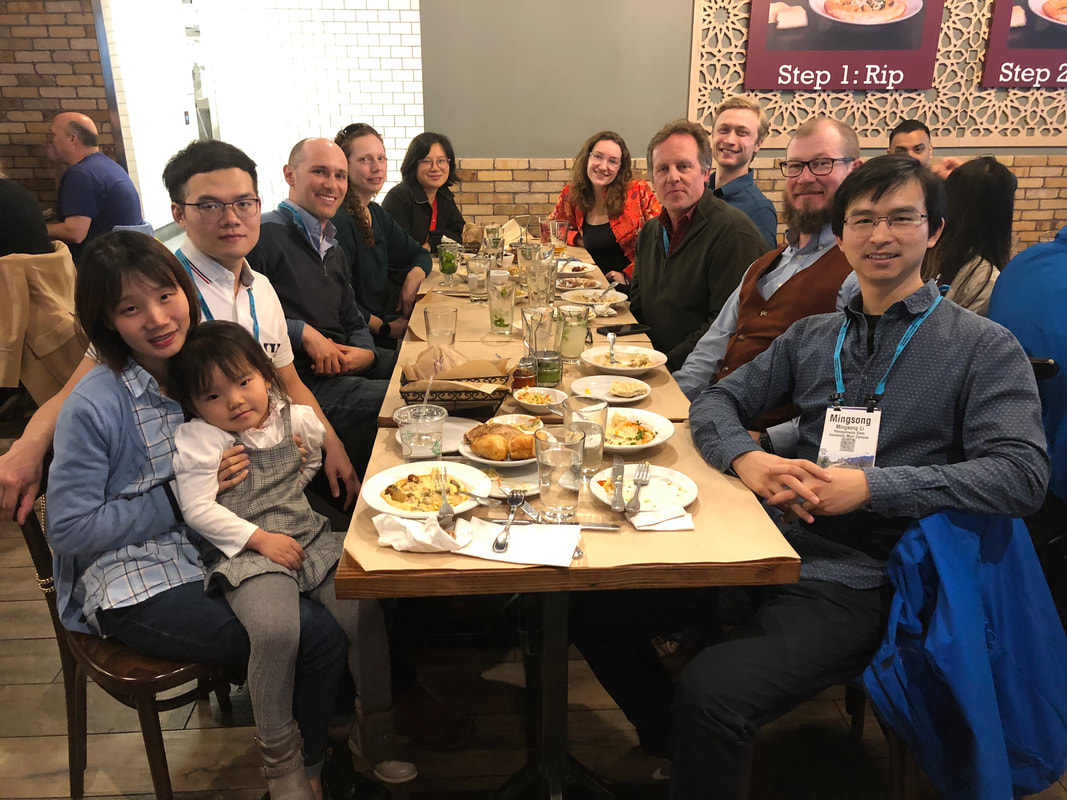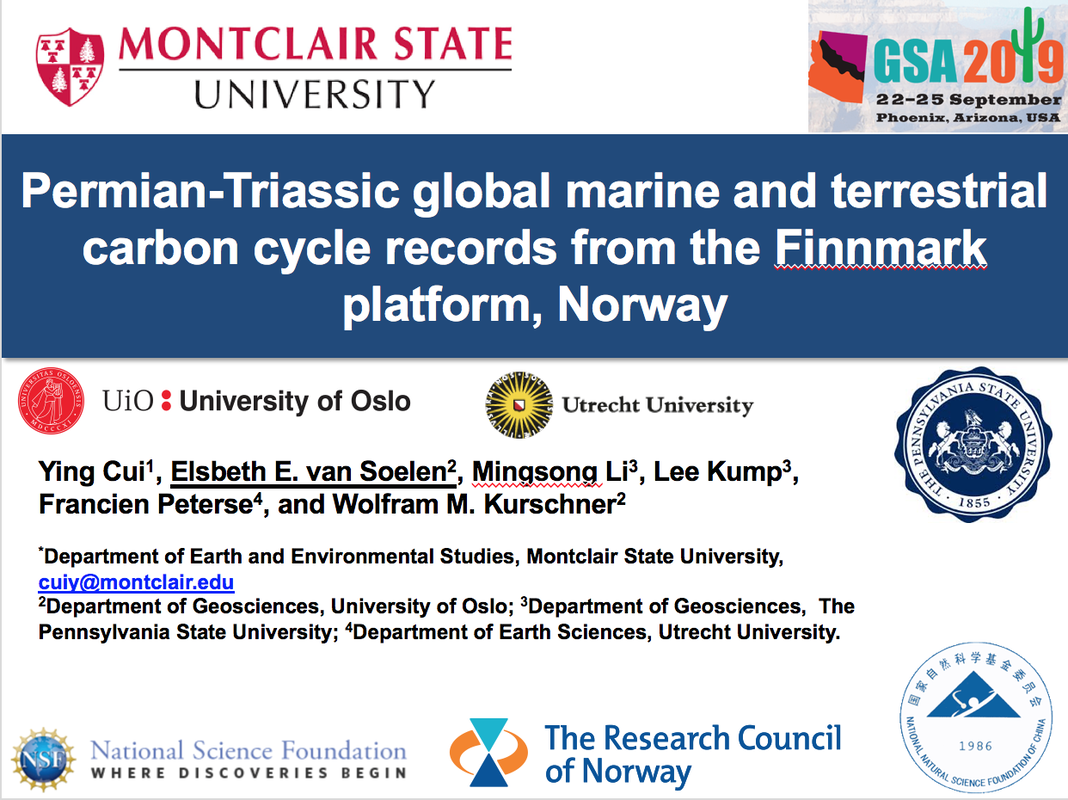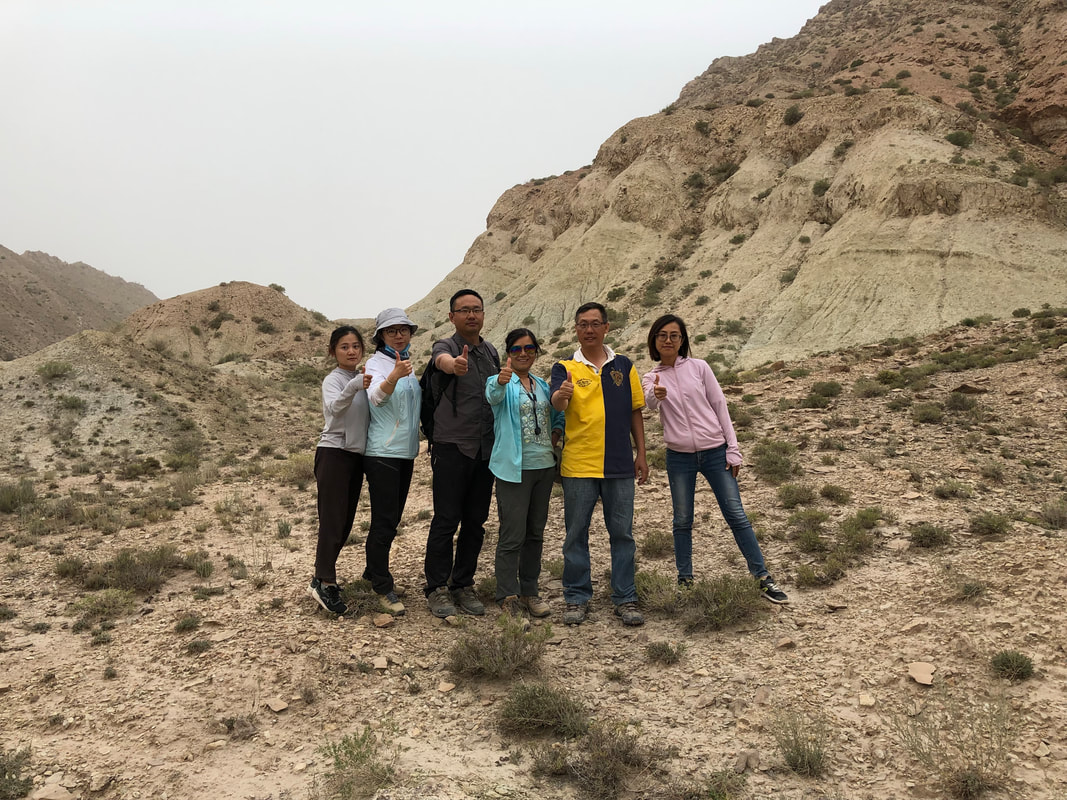|
Dr. Ying Cui
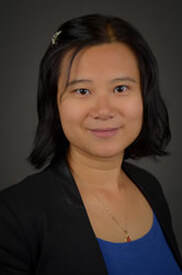
Contact Ying Cui 418 CELS Building, Department of Earth and Environmental Studies Montclair State University Montclair, NJ 07470 Email: c[email protected] Tel: (973)655-7273 |
About me:
I am currently an associate professor at Montclair State University. I received a PhD in Geosciences and Biogeochemistry from Penn State in 2014. I'm a geochemist using Earth system model to investigate changes in climate and the geochemistry of ocean and land. Specifically, I'm interested in time intervals in the geologic past when the rate of greenhouse gas release is faster than the background rate, for example, mass extinction events and extreme global warming events. My primary tools are stable isotopes of carbon (bulk carbonate, organic matter, and compound specific), oxygen (tree ring and cellulose), and nitrogen (bulk organic matter) and Earth system model of intermediate complexity equipped with the cycles of these elements. I'm also interested in uncertainty quantification using a variety of statistical approaches to investigate the changes in temperature in response to a doubling of pCO2 (known as climate sensitivity). |
Lab News
Watch the PBS series (Ancient Earth/Inferno) about the largest extinction of all time:
https://www.pbs.org/wgbh/nova/video/ancient-earth-inferno/
https://www.pbs.org/wgbh/nova/video/ancient-earth-inferno/
|
Congratulations to Sam Benjamin for winning the 1st place of the 2021 Fall Mario M. Casabona Future Scientists Awards ($2000 cash prize!)! Sam is working with our MS student Maurizia De Palma on black carbon extraction and its isotopes for PETM sediments from the eastern Tethys to unravel wildfire history 56 million years ago. She did a fantastic job explaining her research on Paleoclimatology and how we can use knowledge learned for past global warming events to better inform future decision and policy making. She also did an awesome job during the Q&A with well-prepared knowledge and skill to address a wide range of questions from the audience.
|
|
Congratulations to Anthony Gachetti for winning 2nd Place of the 2021 Mario M. Casabona Future Scientists Awards ($1500 cash prize!)!
The Mario M. Casabona Future Scientists Program encourages students to enhance their oral communication skills to discuss the basis, rationale and results of their scholarship, especially outside their disciplines. For our students to excel in graduate school, and in their careers, it is critical that they be able to communicate their ideas effectively in with both scientific and layman groups and individuals. For more information, please visit: https://www.montclair.edu/csam/programs-and-opportunities/casabona-future-scientist/ |
|
Our new compound-specific carbon isotope work is out in Paleoceanography and Paleoclimatology with open access: https://agupubs.onlinelibrary.wiley.com/doi/full/10.1029/2020PA003942
The the high Arctic during the PETM is warm and humid, with rising sea level and anoxic water conditions. The PETM is thought to be one of the best analogues for future climate change. |
|
Visiting PhD student Yuyang Wu published his pCO2 reconstruction work in Nature Communications: https://www.nature.com/articles/s41467-021-22298-7.pdf
This work shows that the atmospheric pCO2 increases from ~450 ppm to > 2500 ppm over less than 75,000 years during the Earth's largest mass extinction event occurred 252 million years ago! |
|
Our lab recently received two NSF awards on the Paleocene-Eocene Thermal Maximum ($120,807.00) and the end-Permian mass extinctions ($321,205.00):
https://www.nsf.gov/awardsearch/showAward?AWD_ID=2002370&HistoricalAwards=false https://www.nsf.gov/awardsearch/showAward?AWD_ID=2026877&HistoricalAwards=false |
Weston Science Scholars Program: The Weston Science Scholars Program, now in its 23rd year, offers specially selected ninth, tenth and eleventh graders from Montclair High School the opportunity to learn science “by doing science.” The program recognizes high achieving students with significant potential in science, mathematics and related fields.
A partnership between Montclair State University and the Montclair Public Schools, made possible by Judy and Josh Weston and family, the Weston Program at Montclair State fosters a community of thinkers who ask tough questions and embrace new ideas. The program will run from June 24 – July 28, 2020.
A partnership between Montclair State University and the Montclair Public Schools, made possible by Judy and Josh Weston and family, the Weston Program at Montclair State fosters a community of thinkers who ask tough questions and embrace new ideas. The program will run from June 24 – July 28, 2020.
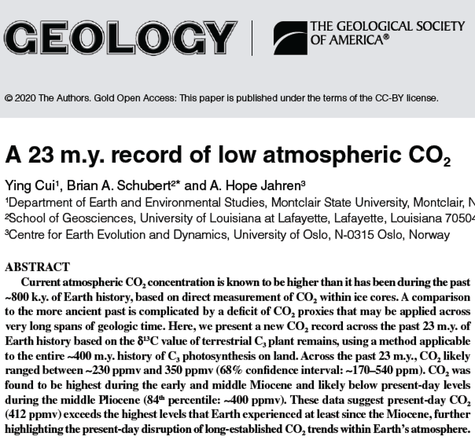
I'm proud to announce that our Geology paper on atmospheric CO2 reconstruction is officially published (https://doi.org/10.1130/G47681.1), and can be downloaded for free here. This work uses the novel CO2 proxy based on the principle that carbon isotope fractionation varies as a function of atmospheric pCO2. Large numbers of carbon isotope data from C3 plant remains were assembled from literatures and aided in the computation of near-continuous pCO2 and associated uncertainties in the last 23 million years. This new record is compared with the ice-core CO2 data in the last 800,000 years, the blue ice CO2 data from 1-2 million years ago and other proxy CO2 data. We found the present-day CO2 level (412 ppm) exceeds the highest levels that Earth experienced at least since the Miocene (~23-5.3 Ma), highlighting the present-day disruption of the long-established CO2 trends within the Earth's atmosphere.
|
Congratulations to Yixin Dong, visiting PhD student from Institute of Sedimentary Geology, Chengdu University of Technology for the new publication on "thermal convection dolomitization induced by the Emeishan Large Igneous Province" in the journal Marine and Petroleum Geology, 5-year IF 4.021.
This paper provides new petrological and geochemical evidence for the mechanism of dolomitization in the Sichuan Basin, an important region for oil and gas exploration. For more information, please visit: https://www.sciencedirect.com/science/article/abs/pii/S026481722030091X?via%3Dihub A link to the PDF can be found here. |
|
In Spring 2020, I'm teaching EAES 107 (Section 04 and 05) to non-science major students about Earth and the Environment. Survey shows that the one thing students want to take away from this course is to "reduce carbon footprint" and "learn how to deal with climate change". I'm excited that our Gen Z are aware of these issues and want to make a difference.
In addition to Gen-Ed courses, I'm also teaching a pro-seminar Paleoclimatology. 14 students from senior to PhD students are in my class learning about various tools we could use in Paleoclimate research. I look forward to an exciting journey for the rest of the semester. |
|
Our collaborative work led by Dr. Feifei Zhang at Nanjing University is out at Geochimica et Cosmochimica Acta, a high-impact geochemical journal for geochemistry.
This work uses uranium isotopes as a proxy for large-scale marine anoxia during the end-Permian mass extinction event (EPME), the largest extinction event in the Earth history. We combined a uranium cycle box model with observed uranium isotope excursions to understand the ocean chemistry change when the extinction occurred. We are currently developing and applying Earth system models to further our understanding of the cycles of these non-traditional metal isotopes in ancient oceans. Stay tuned! |
|
Goldschmidt 2020 will be held in Hawaii from June 21 to 26, 2020. The abstract submission deadline is Feb. 14, 2020. Please consider submitting an abstract to our session 09b: "Large igneous provinces, perturbations in biogeochemical cycles and mass extinctions through Earth history", convened by Drs. Richard Ernst, Ying Cui, Yogaraj Banerjee, and Prosenjit Ghosh.
|
|
Our new work led by Dr. Feifei Zhang on quantifying the extent of marine anoxia during the Late Devonian Hangenberg Crisis is out at EPSL. This work demonstrated the importance of coupling isotope-enabled Earth system models and non-traditional isotopes to understand Earth system processes during past environmental perturbations and mass extinctions.
This paper can be downloaded here. For similar research paper, please visit my google scholar page. |
|
Our newly established stable isotope geochemistry lab is now fully functioning! Students are actively measuring their samples for conference presentations and preparing for their thesis defense.
We are producing high-quality duplicates and triplicates on our samples using the Coplen et al. (2006)* 2-point linearity calibration approach with the following USGS standards and the standards from Elemental Microanalysis: USGS certified standards: USGS-40: L-glutamic acid; USGS-41: L-glutamic acid enriched in d13C and d15N; USGS-42: Tibetan Human Hair; USGS-61, 62, and 63: Caffeine; USGS-64, 65, and 66: Glycine; Elemental Microanalysis certified in-house standards: High organic content sediments; Low organic content soil; Protein standard; Wheat flour standard; Soghrum flour standard; |
|
December 9-13, 2019, AGU (American Geophysical Union) Annual Fall Meeting Dr. Ying Cui presented a collaborative talk entitled: "Evidence for higher climate sensitivity from long-term carbon-cycle observations" Full manuscript is currently in revision for Nature Communication, and can be found at: https://arxiv.org/pdf/1910.11987.pdf |
|
Geological Society of America, 2019 Fall Meeting in Phoenix, Arizona (home of Arizona State University), September 24
Dr. Ying Cui gave a talk on "Permian-Triassic global marine and terrestrial carbon cycle records from the Finnmarkplatform, Norway". This is a group effort led by Dr. Wolfram Kürschner at University of Oslo, Norway. |
|
Field Trip in the Tarim Basin, July 15 to July 30 led by Dr. Shijun Jiang from Jinan University. The aim of this study is to understand the environmental consequences from rapid CO2 emissions, similar to the ongoing anthropogenic CO2 release, although at a much slower rate and of natural cause (most likely due to large igneous province). |
